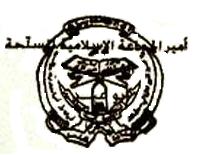
The Armed Islamic Group was one of the two main Islamist insurgent groups that fought the Algerian government and army in the Algerian Civil War.

The Quebec Autoroute System or le système d'autoroute au Québec is a network of freeways within the province of Quebec, Canada, operating under the same principle of controlled access as the Interstate Highway System in the United States and the 400-series highways in neighbouring Ontario. The Autoroutes are the backbone of Quebec's highway system, spanning almost 2,400 km (1,491 mi). The speed limit on the Autoroutes is generally 100 km/h (62 mph) in rural areas and 70–90 km/h (43–56 mph) in urban areas; most roads are made of asphalt concrete.
Articles related to Algeria include:

The Islamic Salvation Front was an Islamist political party in Algeria. The party had two major leaders representing its two bases of its support; Abbassi Madani appealed to pious small businessmen, and Ali Belhadj appealed to the angry, often unemployed youth of Algeria.
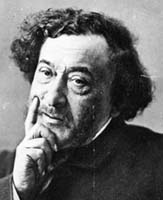
Léon Gozlan was a 19th-century French novelist and playwright.
The Si Zerrouk massacre took place in the Si Zerrouk neighborhood in the south of Larbaa in Algeria on 27 July 1997. About 50 people were killed.

The Algerian Civil War, known in Algeria as the Black Decade, was a civil war fought between the Algerian government and various Islamist rebel groups from 11 January 1992 to 8 February 2002. The war began slowly, as it initially appeared the government had successfully crushed the Islamist movement, but armed groups emerged to declare jihad and by 1994, violence had reached such a level that it appeared the government might not be able to withstand it. By 1996–97, it had become clear that the Islamist resistance had lost its popular support, although fighting continued for several years after.
The Algerian Civil War was an armed conflict in Algeria between the Algerian Government and multiple Islamist rebel groups, sparked by a military overthrow of the newly elected Islamist government. The war lasted from December 1991 until February 2002, though in the south of the country an Islamist insurgency remains ongoing.

The Guirlande de Julie is a unique French manuscript of sixty-one madrigaux, illustrated with painted flowers, and composed by several poets habitués of the Hôtel de Rambouillet for Julie d'Angennes and given to her on her name day in May 1641. The 1641 manuscript was bought by the Bibliothèque nationale de France in 1989 and is now kept in the Département des Manuscrits of the BnF.

Algiers Province is a province (wilayah) in Algeria, named after its capital, Algiers, which is also the national capital. It is adopted from the old French department of Algiers and has a population of about 8 million. It is the most densely populated province of Algeria, and also the smallest by area.
François or Francis Le Clerc, also known as "Jambe de Bois", was a 16th-century French privateer, originally from Normandy. He is credited as the first pirate in the modern era to have a "peg leg".

Serge Petrovitch Ivanoff was a French painter of Russian origin.
Marie Henri Andoyer was a French astronomer and mathematician.
Mohamed Seghir Boushaki, was an Algerian Kabyle politician after the French conquest of Algeria.
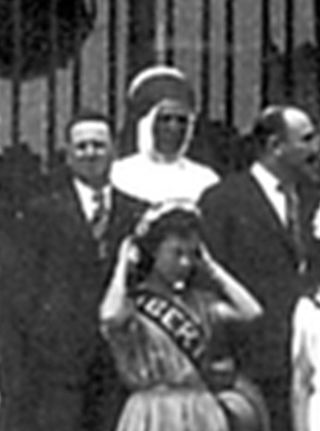
Mohamed Deriche, was an Algerian Berber politician after the French conquest of Algeria.
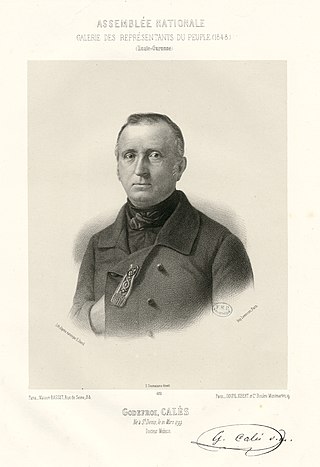
Jean Marie Noël Godefroy Calès was a French physician and politician. He was born on 21 March 1799 in Saint-Denis (Seine-Saint-Denis) and died on 25 July 1868 in Villefranche-de-Lauragais (Haute-Garonne).

Zawiyet Sidi Boumerdassi or Zawiyet Ouled Boumerdès is a zawiya located within Boumerdès Province in Algeria.
The Shipwreck of Dellys took place in May 1830, during the French conquest of Algeria. It involved French troupes coloniales, under captains Félix-Ariel d'Assigny (1794-1846) and Armand Joseph Bruat (1796-1855), who were captured by the resistance fighters of the town of Dellys in Kabylia of the Igawawen.
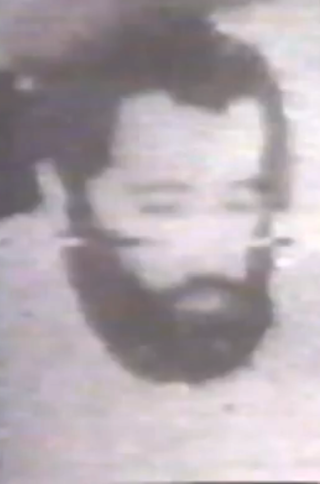
The Islamic Armed Movement was an Islamic guerrilla group and terrorist organization in northern Algeria in the 1980s and 90s. The group was the largest and most broadly-based Algerian Islamic extremist organization of the 80's. The group was founded by Mustafa Bouyali in 1981 or April 1982 or July 1982 after a confrontation with security services. The group, which carried out attacks against the government in the Larbaa region, was a loose association of small groups of which Bouyali proclaimed himself the emir. The group engaged in guerrilla warfare similar to the Maquis of WWII, and was based in the rural areas of the Atlas Mountains and the Blida District as it provided the ideal terrain for extremist groups, specifically targeting the Mitidja. Bouyali originally was a preacher at the El-Achour Mosque in Algiers where he had gained a following. In 1979 or 81' he formed the Group for Defense Against the Illicit, pressuring the government to implement Islamic law and to adopt policies that reflected "real" Muslim values. This group attacked bars and individuals, but had no real power, so Bouyali decided to turn to armed struggle. He was relentlessly harassed by security services though, due to his speaking out against the regime and his support for an Islamic state.











